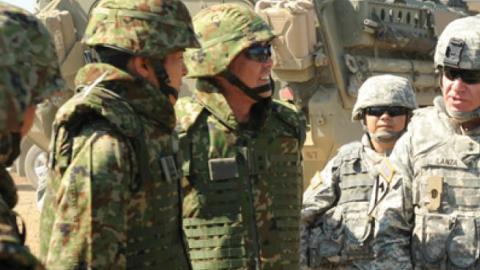Policy Objectives
It has been almost five years since the last Guidelines for Japan-U.S. Defense Cooperation were introduced in 2015. Since then, the Trump administration has taken power, and the United States and Japan have both reviewed their defense strategies (the 2018 National Defense Strategy [NDS]1 and National Defense Program Guideline [NDPG]2 respectively).
The U.S.-Japan alliance faces several challenges in preparing for long-term strategic competition with China. But have the U.S and Japan been able to clearly prioritize defense investment areas and allocate limited resources? The two countries’ resources are finite, and it is not practical to pursue full-spectrum dominance.
* Japan should begin to engage in a discussion with the United States to redefine the roles, missions, and capabilities needed to impose costs on China by exploring the appropriate mix of offensive and defensive capabilities needed.
* Japan should attempt to define an appropriate force posture for the Self-Defense Forces (SDF) based on threats, not on legal issues including the Constitution. To do so, it is necessary to reconsider the meaning of an exclusively defense-oriented policy.
* Japan and U.S. alliance handlers should devote more time to verifying not only hardware issues such as weapon systems but also operational concepts and to updating the command and control structures.
Background
The security environment in the Western Pacific, where the U.S.-Japan alliance and China encounter each other, is sometimes described as a risky situation that could lead to an arms race. Some people see this as a problem of the so-called “security dilemma.”3 However, it is not appropriate to use the discussion of security dilemmas to explain this regional security environment. The security dilemma is defined as the spiral model of an unexpected arms race that occurs even though no side really desires it.4 However, it is clear that China’s military expansion and the People’s Liberation Army (PLA) activities over the past twenty years are not reactions to the defense build-up of Japan and the United States. From the late 1990s to 2012, Japan’s defense budget was almost flat or even declining.5 Since 2012 following the inauguration of the second Abe administration, Japan’s defense budget has grown. But this growth rate is marginal relative to China’s, which for FY2019 increased by 7.5 percent over the previous year.6
In recent years, Japan has also been preparing for a state visit from President Xi Jinping. Diplomatic relations between Japan and China have thus improved. However, China’s Coast Guard and PLA Navy (PLAN) vessels have been increasingly active in the East China Sea.7
In other words, even if diplomatic relations between Japan and China improve, China’s military and paramilitary activities have become more active. This indicates that China is engaging in a deliberate military expansion regardless of what Japan and the United States do. This is not an unexpected arms race spiral like a security dilemma. If China’s military buildup is not a reaction to the actions of the U.S.-Japan alliance, no matter how much diplomatic communication improves, there will be a fundamentally competitive relationship between the U.S.-Japan alliance and China. This is the reality of long-term strategic competition that the alliance partners must recognize.
The 2017 National Security Strategy (NSS) criticized the U.S. government’s traditional “engagement” policy for failing to produce results.8 An unexpected arms race could be prevented by ensuring close communication and transparency. But if the challenger is engaged in deliberate military expansion, it would not be a realistic objective for a defending side (status-quo power) to aim to shape its opponent. What a status-quo power should do is identify what the challenger is trying to do and try to prevent it from doing so. This is the essence of selective deterrence or selective containment.9
Read the full chapter in Stimson




















